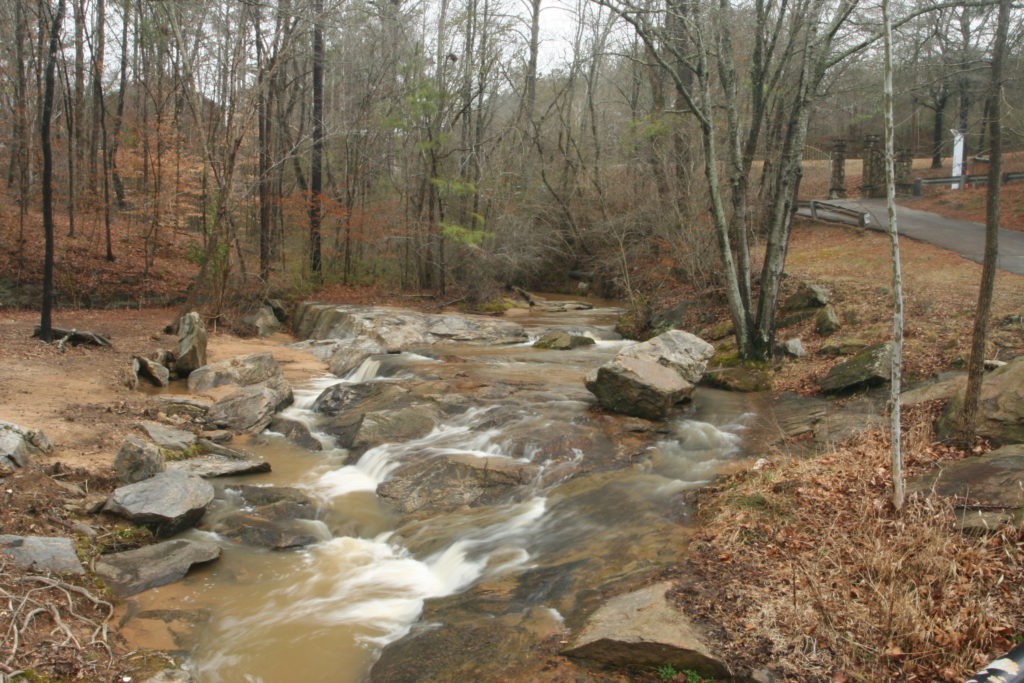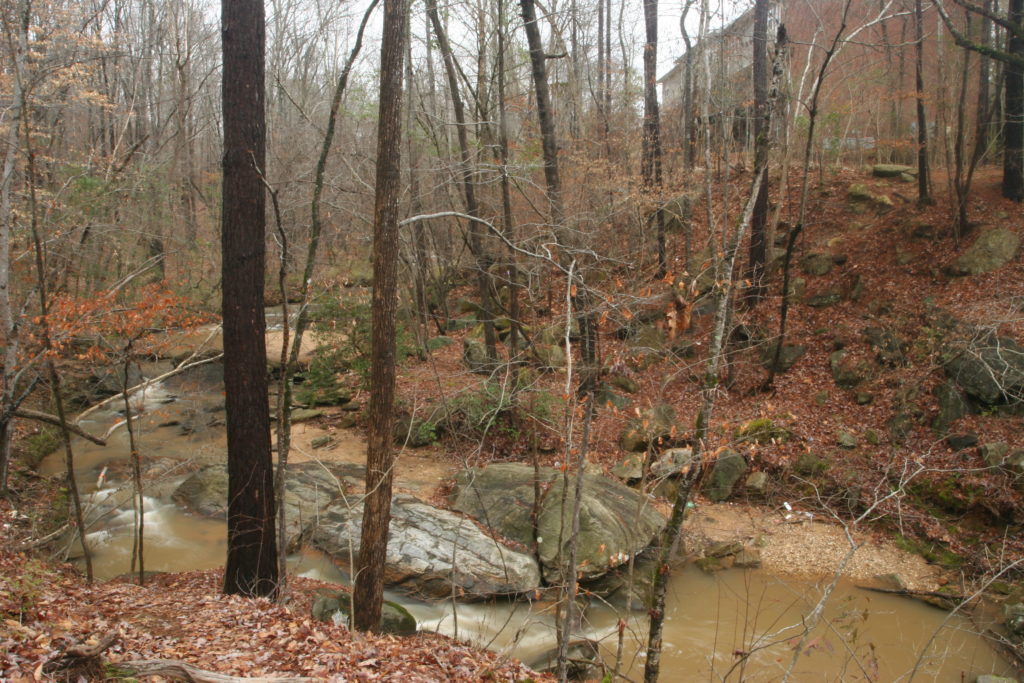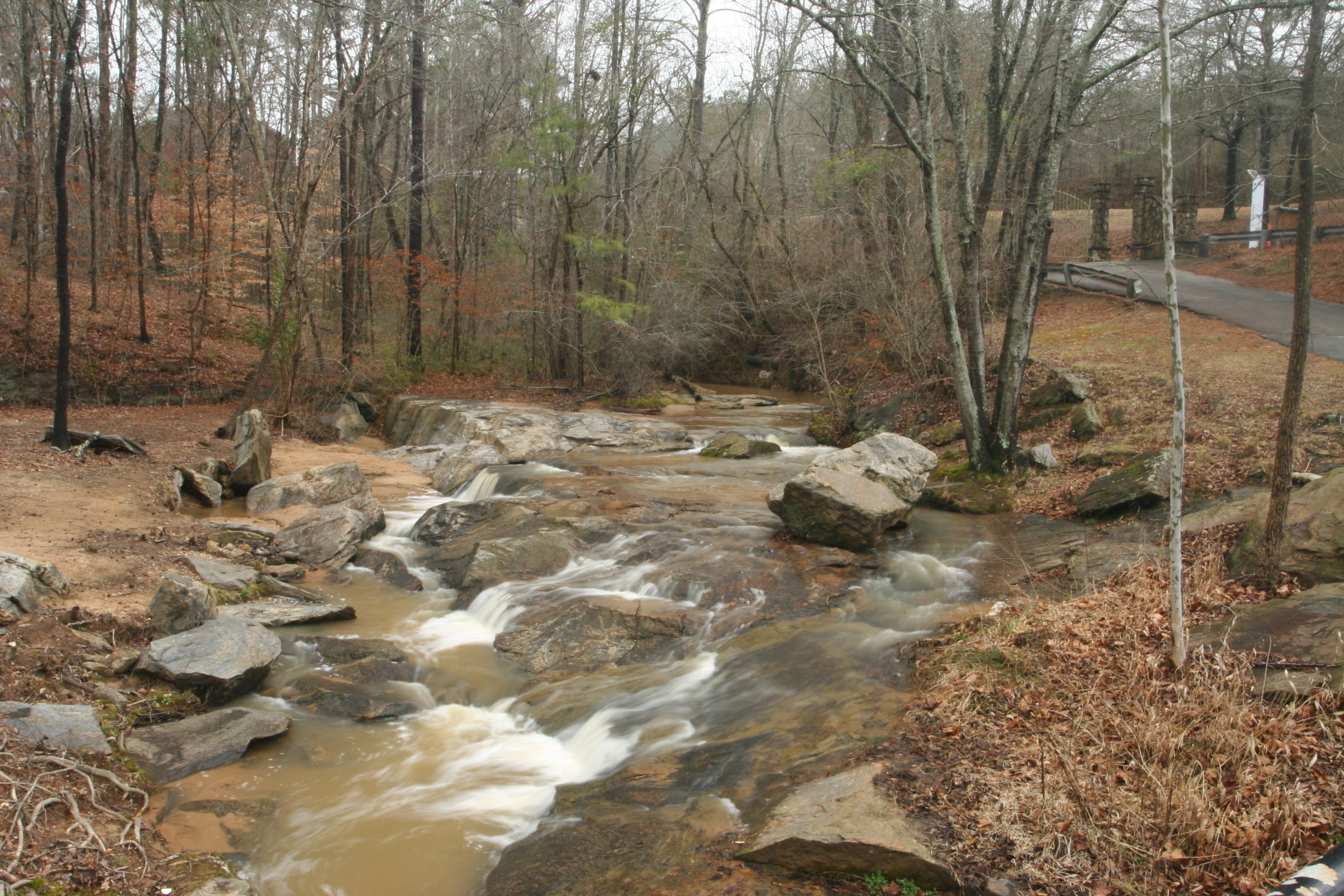This research addresses the following questions:
- What measurements best capture and indicate impairment of streams due to watershed urbanization?
- How can physical, chemical, and biological aspects of stream organisms be used to inform watershed management and protection plans?
Project overview
Most people are predicted to reside in urban areas in the coming century and this will have profound impacts on aquatic resources. Research into how streams respond to urbanization has revealed complex interactions between the amount of impervious surface cover in a watershed (e.g., roads, buildings), chemical runoff, and riparian disturbances, for example. However, the mechanisms that drive responses to these urban phenomena are not well understood. These issues have been outlined in the comprehensive review articles led by Wenger and Carter (Wenger et al. 2009, Carter et al. 2009).


We explored the impact of watershed urbanization in streams in Athens, GA. We used macroinvertebrate biomass and community composition to assess the relative importance of toxins vs hydrological effects in Athens-Clarke County (ACC) streams and found evidence of both pathways of impairment (Sterling et al. 2016). As part of this study, we provided biological assessments for watershed management plans. These plans can be used by ACC to ultimately make steps to improve stream health and water quality in the area (ACC’s Watershed Protection Plan and Watershed Management Plan).
